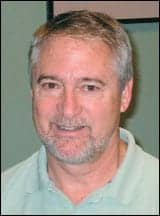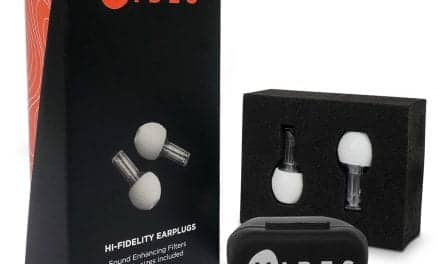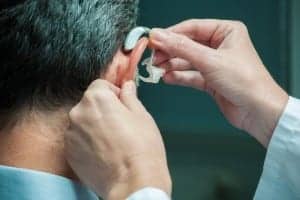The digital world is changing the dynamics of impression-taking and earmold manufacturing.
The earmold/earshell industry is a business that has, at the same time, many variables and few variables—a conundrum easily solved when taking a look at the strategies of the following companies. As the digital age ushers in an ever-expanding variety of acoustic devices, the fundamentals of impression-taking and earmold manufacturing have remained much the same over the years, reducible to a few basic stages involving a few basic materials. But change is occurring rapidly, and some earmold companies—often family run enterprises long set in their ways—are presented with some interesting challenges and opportunities.
CHANGING WITH THE MARKET
-

- Mid-States earmolds
One well-known company in the earmold/earshell industry is Mid-States Laboratories, Wichita, Kan, where Woody Rice presides over an operation that his father started in 1951, making it the oldest earmold lab in the country Mid-States Laboratories is followed closely by four other prominent family-owned labs: Westone Laboratories (1959), All American Mold Laboratories and Microsonic (both in 1964), and Earmold Design Inc (1965).
Correction (10.08.2007): Scientific Plastics, New York, is actually older, having been incorporated in 1942, and serving the hearing industry since that time. -Ed.
Mid-States’ main business is earmolds for hearing aids, but they also produce a wide variety of sound protection molds for musicians, pilots, race car drivers, factory workers, gun enthusiasts, as well as swimplugs, to name a few—”anything customized, we can make it,” Rice says.
The five typical styles of earmolds—shell, skeleton, shell canal, canal, and regular—can be offered in many varieties because of growth in technology. “There are all kinds of acoustic advances to modify frequencies, especially in the high frequencies where most people have their hearing loss,” Rice says. “So there are many variables you can use with the earmolds.” Rice points out that open-fit and thin-tube BTEs have become very popular in hearing aids, and with digital technology “There’s much more you can do than even 3 to 5 years ago.”
Silicone is the most widely used material because of its good stability, but acrylic is also in demand. “Some people,” Rice says, “still prefer the hard Lucite/acrylic because they just don’t want to change [to the more modern and pliable silicone].” The company has provided all of the earmolds for NASA astronauts using its Audtex/Apollo material that is notable for the way in which it seals the ear as it softens with warmth.
“Use of materials for impressions depends a lot on people’s likes and dislikes—there are pros and cons to low, medium, or high viscosity,” says Rice. “Higher viscosity can expand the ear canal and make the ear bulge out, so when making the impression my preference is to use the cartridge gun system because it doesn’t expand the canal.” The company offers its exclusive Yellow Stuff material for impressions, while other materials for earmolds include Softex (for sensitive ears), Marveltex (a Mid-States mainstay), and MSL-90 (designed primarily for feedback problems in high-gain instruments).
Although standard, generic earmolds have become more popular in recent years, Rice contends that they’re not really the best option. “They may fit the patient fairly well, but they could be too loose, might fall out, or not be comfortable. Why not do something custom for the best enhancement where you need the help—according to your specifications? These days, more companies are including custom molds in the price of the hearing aid. They order it from us, and we get it out within 1 or 2 days.”
MAKING A GOOD IMPRESSION
Another Wichita-based earmold company is Perfect Seal Labs, started by President, Mike Martinez, in 1999. The company primarily depends on earmolds for hearing aids as its dominant business—especially custom molds for slim-tube, open-fit hearing aids. As with other earmold companies, Perfect Seal offers a wide variety of product choices.
-
- Perfect Seal custom shells
For impressions, silicone is by far the most popular material in the company’s offerings. As for earmolds, most of the ones made by Perfect Seal Labs are hard, clear acrylic Lucite, with their PS-2000 clear soft silicone next in volume.
Martinez describes the steps involved in making the best impression: “It’s really not too complicated of a process. First would be an inspection of the patient’s ear, making sure there are no foreign objects, wax build-ups, and so on. From there a cotton or foam block would be placed in the ear. If foam is used, since [the block is] a cylinder shape, it can sometimes twist and take up impression space; you have to be careful about that because, if it happens, you’re not getting a full impression.” Step three, explains Martinez, is mixing the materials, whether it is acrylic or silicone. “We always recommend silicone for its durability. If the box gets crushed in shipping, no problems there.”
“Some people use the injection gun, some the 2-part hand-mixed material,” Martinez continued. “We prefer the hand mix because it’s a little bit thicker than the injection gun. You put the mix into a syringe, making sure there’s no air bubbles. The next step is actually injecting it into the ear, and from there the process is the same for both the hand mix and injection gun.”
The material is injected into the canal up to the block, slowly pulling the syringe out as the material is put in. “Pulling the syringe out in a slow, rhythmic manner is important so as not to create voids.” The canal is filled, then the rest of the ear is filled and the material is left to set, which usually takes 5 to 10 minutes.
Of the three choices in positioning the patient’s mouth during the impression-taking process—closed-mouth, open-mouth, or chewing—”we prefer either the closed-mouth or open-mouth technique. With some people, their ear really changes with jaw movement; others hardly at all. It’s a case-by-case situation, sometimes involving trial-and-error,” Martinez says.
With gentle pulling, the impression should slide out easily. Because of silicone’s superior resilience, the impression can be put directly in the box for shipping without safeguarding it against movement. The acrylic impression, on the other hand, should be glued to the bottom of the box to prevent it from becoming distorted during shipping.
Martinez feels that some people might buy a standard earmold rather than a custom one because of the ease and speed of obtaining an off-the-shelf product. However, when it comes to fit and comfort, he says there is no substitute for a custom mold.
Venting to create more air channels in the mold will roll off the low frequencies; the larger the vent, the more the lows are rolled off. Damping with materials, such as lamb’s wool, will roll off the high frequencies, but is “rarely used anymore now that we have digital programmable hearing aids,” Martinez says. “Damping used to be more important when dispensing professionals couldn’t control the frequencies like they can today.”
Maintenance for earmolds is a simple matter. “Just keep them nice and clean,” Martinez says. “Dish soap works real well. Proper insertion and removal is also important; don’t pull the molds out by their tube. That will distort the earmolds.”
As for the question of whether there are or will be other materials superior to the ones being used now for impressions, Martinez thinks not. “More likely, with computer scanning on the way, no physical impression materials at all will be used. In the future, earmolds will probably be made from a digital file.”
FORMULATING THE RIGHT PRODUCTS
Insta-Mold Products, Oaks, Pa, is not an earmold company, per se, in that the company is involved developing a range of products and technologies. But they are definitely a specialized manufacturer of earmolds; Insta-Mold actually makes silicones for earmold labs worldwide. “We are the only company in the hearing health industry,” states president Richard Gersh, “that manufactures its own silicones for direct sale to the hearing care professional.” Silicone products are available in an array of colors, densities, and performance properties.
-
- Insta-Mold products
Another legacy business, Gersh’s father, Sydney M. Gurschkov, PhD, founded the business in 1970. Like his father, Gersh is a chemist who believes that what sets Insta-Mold apart is the quality of its impression materials. “Our silicones are formulated with more expensive, high-viscosity silicones and specially treated reinforcing fillers for superior mechanical properties, such as durability, water repellent characteristics, and dimensional stability.”
The company’s most popular product is its Original Insta-Mold Process, which allows the dispensing professional to make a custom silicone swimplug, earmold, or noise protector on the spot, in only minutes. There is no laboratory and no long waiting period. The impression becomes the final product so the patient receives a finished product the same day. “The patient’s ear is used as the actual mold, resulting in the ultimate custom fit and best possible seal against water, noise, and acoustic feedback,” Gersh says.
The need for hearing aids is at an all time high, as people continue to expose themselves to excessive noise levels causing hearing loss. Gersh says their company has focused on continuous research, as well as developing and maintaining alliances with key customers like hearing aid manufacturers, earmold labs, health care professionals, and their patients.
ALL IN THE FAMILY
Bill Lassiter is also one of the top “family guys” in the earmold business. His wife, son, daughter, and son-in-law all work at his company, Precision Laboratories, Altamonte, Fla. Lassiter and his boss at the time, Jerry Blue, started the company in 1975 in Oklahoma City, then he journeyed to Orlando to manage a new branch. He purchased the company in 1993.
-
- Precision Labs product line
Like the other earmold labs profiled, Precision Labs concentrates on hearing health care, but also makes custom communication earpieces for a wide variety of occupations including race car driving, as well as hearing and swimming protection plugs. Lassiter reports that business has been “quite good.” In 1993, when he bought the company, hearing aids were all in-the-ear instruments. Since that time, BTE hearing aids have grown tremendously in popularity from about 20% to 50% of the marketplace, and his company has also grown substantially.
Regarding materials, Lassiter says that vinyl (PVC, or polyvinylchloride) has gained ground and now is about equal to silicone in ordering volume. The company’s most widely used silicone is a clear, soft variety called JB1000. “We all pretty much use the same materials,” Lassiter says. “Over the years, we’ve tried to educate the providers about this; they give us the hearing loss that they’re trying to accommodate, and we recommend the most suitable material.”
In making impressions, Lassiter prefers the hand-mix method and the chewing or talking mouth position. “There’s a mandible there,” he explains, “that pushes against the ear canal. If that mandible is overactive, it will show up in the chewing or talking impression so you won’t have problems later.”
Regarding venting, he recommends it to diminish the occlusion, or “stuffy” feeling, that inexperienced users of hearing aids sometimes experience. Like others, Lassiter does not do much damping any more; That function has been taken over by the newer digital technology.
For the future, like his colleagues, Lassiter feels that silicone will never be replaced. However, he echoes Martinez’s sentiments: “Everybody in our industry is looking at the computerized way of taking impressions,” Lassiter says. “And, while we’re looking at it, the problem we believe is that you’re too limited in your choices. Many like to use silicone, combination materials, and other soft materials, but the scanning method uses only acrylic. Some manufacturers are going that route anyway, but here at Precision Labs we’re biding our time to see what may be down the road. We want to be able to use a soft material for fit and comfort, and not be handicapped by having to use acrylic only. We’ll wait and see.”
Nonetheless, Lassiter feels that technology will continue to drive what is already a solid business, and the future is very bright. “It just keeps getting better and better.”
Alan Ruskin is a contributing writer for Hearing Products Report and an associate editor for Ascend Media. He can be reached at [email protected].








